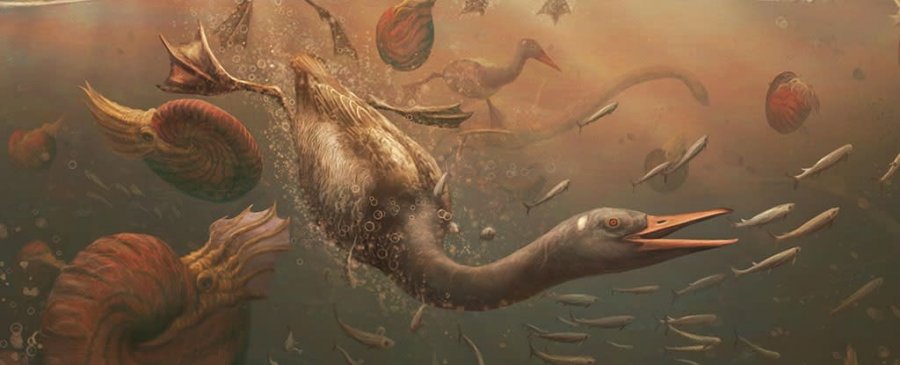The ancestors of modern waterfowl weren’t all that strange. They swam to catch fish and prey in Antarctic waters and looked like modern birds, but were they really modern?
A new study published today in the journal Nature tells us all about these ancestors of modern ducks. Analyzing a newly discovered fossil of Vegavis iaai from the Late Cretaceous period, about 69 million years ago, the study confirms the classification of this species as a modern bird, not too dissimilar to today’s ducks and geese.
“Few birds have generated as much debate among paleontologists as Vegavis,” said Christopher Torres, one of the study’s authors and a professor at the University of the Pacific, in a press release. “This new fossil will resolve many of those debates. The main one: Where does Vegavis fit into the bird evolutionary tree?”
Modern or not?
About 20 years ago, a team of paleontologists first identified Vegavis iaai, analyzing a fossil from Antarctica that was about 68 to 66 million years old. At the time, they classified the species as a modern bird, but that hypothesis has always been controversial and difficult to confirm.
One problem was that all previous Vegavis fossils were just skeletal fragments without skulls. But the new fossil changes everything, as it contains what was previously missing.
The fossil, collected in Antarctica in 2011 as part of the Antarctic Peninsula Paleontology Project, is a nearly complete skull, providing new insights into the classification of the species. With a beak and a braincase that are modern in shape, the fossil suggests that the initial classification of Vegavis was correct, placing this Late Cretaceous fossil as one of the earliest modern birds ever discovered.
A Not-So-Strange Bird
According to the study authors, other birds that lived 69 million years ago were strange and unlike today’s birds.
“Countries with a good Late Cretaceous bird fossil record, such as Madagascar and Argentina, reveal a world full of unusual, now-extinct birds with teeth and long, bony tails that are only distantly related to modern birds,” said Patrick O’Connor, one of the study’s authors and a professor at Ohio University, according to a press release. “Something very different seems to have been happening in the southern reaches of the Southern Hemisphere, particularly in Antarctica.”
Unlike today’s Antarctica, Late Cretaceous Antarctica was warmer and wetter, with a mild climate and dense vegetation. How this environment influenced the evolution of early birds and modern birds is still hard to say, but it is possible that it helped shape some of the features of today’s waterfowl.
“This fossil shows that Antarctica has a lot to tell us about the earliest stages of modern bird evolution,” O’Connor said in a statement.
How did Vegavis live?
In addition to helping us understand the early evolution of modern birds, the new study also helps us understand how Vegavis lived.
The bird was an excellent swimmer, using its powerful legs to move through Antarctic waters in pursuit of fish and other prey. It captured its prey with its powerful jaws, using a feeding strategy more similar to a modern diver like a partridge than to a common duck.




